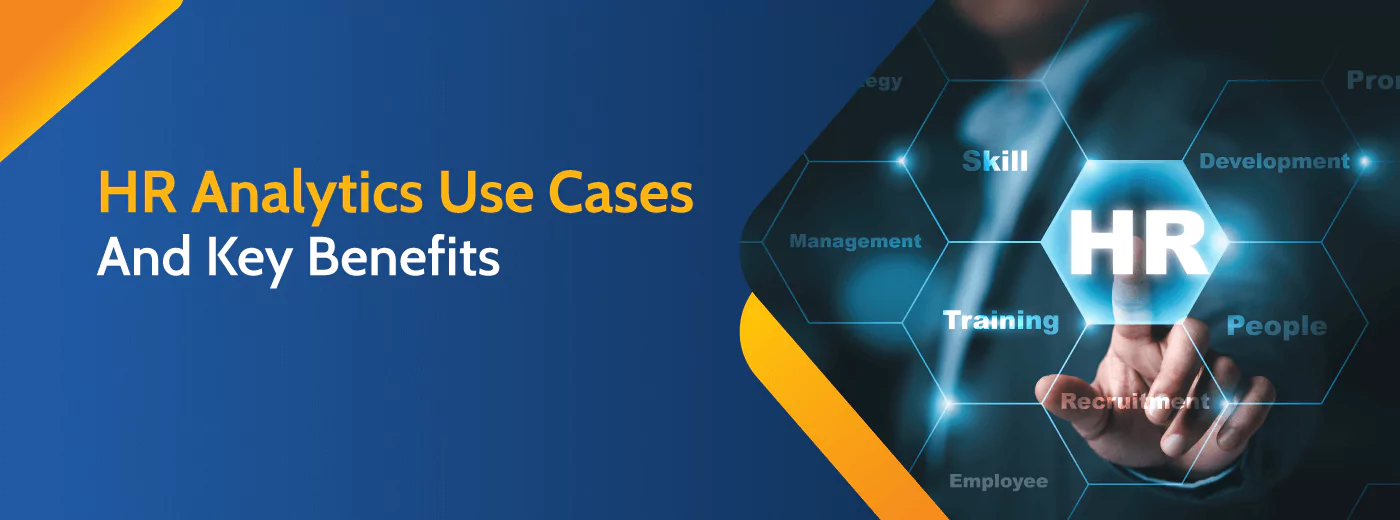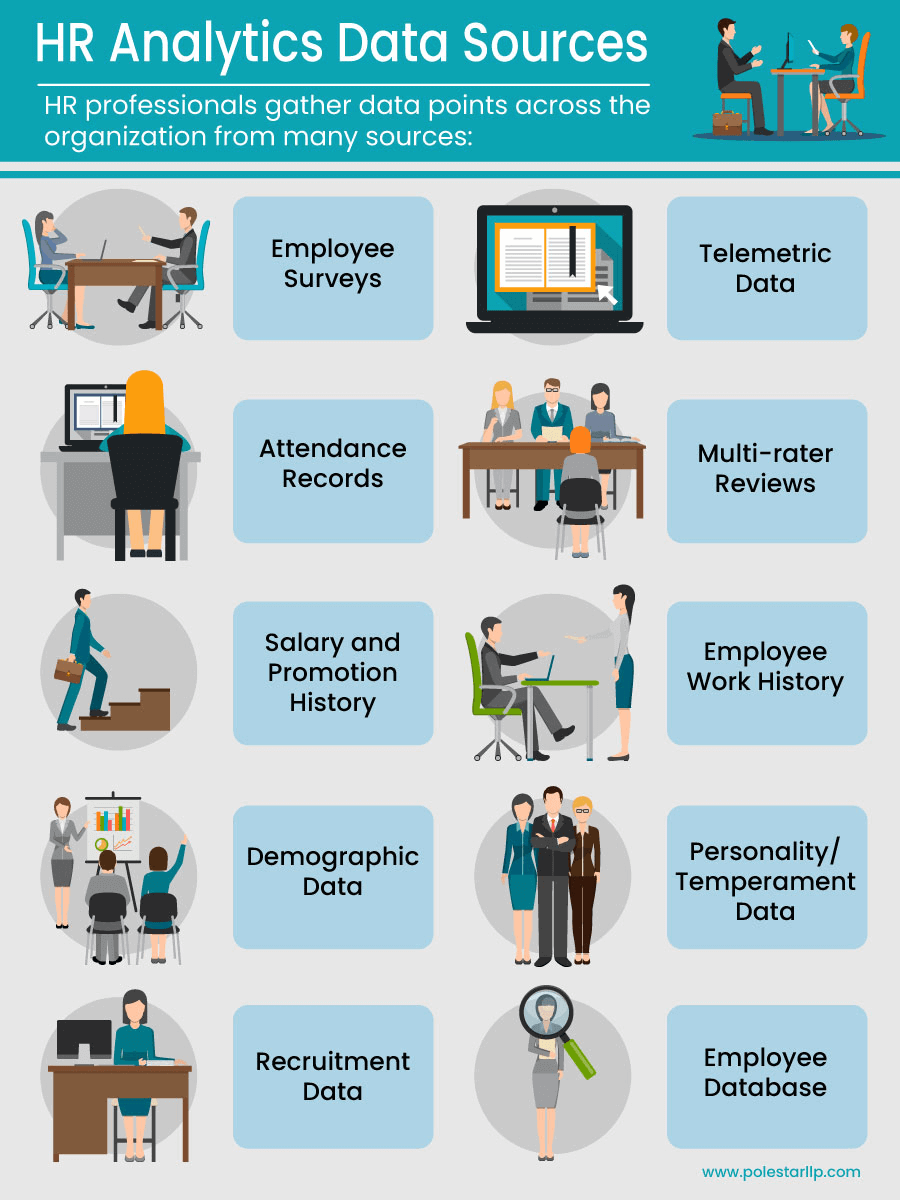
Sign up to receive latest insights & updates in technology, AI & data analytics, data science, & innovations from Polestar Analytics.
Workforce analytics is considered a game-changer for HR, but a recent Deloitte survey found that only 8% believe that their organization is strong in people analytics whereas 75% of companies believe that using people analytics is essential.This shows the gap between the requirement and the implementation of analytics in HR.
In today’s competitive and dynamic landscape, HR leaders are grappling with multiple challenges – managing complex recruitment processes, fostering an engaged workplace, and tracking their success with the efforts invested, boosting employee productivity by measuring the effectiveness of their upskilling programs.
As such, people analytics is crucial to business success and any future strategy, and the responsibility upon HR is to emerge as a strategic center of excellence within modern organizations.
HR analytics tools can provide evidence-based insight into fundamental questions in areas related to making better hiring decisions, reducing employee attrition and increasing employee engagement among others.
The critical challenge before enterprises is how to build the desired capability in people analytics.
In today’s competitive and dynamic landscape, HR leaders are grappling with multiple challenges – managing complex recruitment processes, fostering an engaged workplace, and tracking their success with the efforts invested, boosting employee productivity by measuring the effectiveness of their upskilling programmes.
Data analytics refers to the superset of technologies, statistical techniques, and processes that are helping HR personnel capture data from multiple source systems, creating data models to build complex logics, and then communicating the HR analytics insights in the most effective manner, helping the HR make better decisions, leading to improved returns on investments into people.
HR Analytics is a discipline of data analytics that data analytics in HR refers to the superset of technologies, statistical techniques, and processes that are helping HR personnel capture data from multiple source systems, create data models to build complex logics and then communicating the HR analytics insights in the most effective manner. A recent survey by Linkedin shows that there has been a massive 242% increase in the requirement of data analysis skills from HR professionals.
Deals with people analysis to help HR make better decisions, leading to improved employee retention and employee performance for better returns on investment of people.
HR Analytics dashboard can provide crucial insights to improve the existing HR processes:
Learn how we use predictive analytics to Predict Employees Likely To Leave to help Take Preventive Measures Before Its Too Late
The data often exists in multiple silos within different applications & systems. Hence, the primary challenge is how to integrate the data from these places and ensure the threshold levels of data sanctity, integrity, and cleanliness.
Errors in data will directly affect the quality of insights derived from the analytics model. Hence it is very crucial to carry out this step with due diligence so that the users can trust the quality of HR metrics delivered by the model.
Otherwise, the proverbial “ garbage in, garbage out”, will create a negative perception among the stakeholders about the effectiveness of analytics, limiting its ability to expand.
People analytics insights need to be communicated via the most effective channels, in real-time if possible, using data visualization best practices and engaging reports, delivering a 360-degree view of the function – to create the desired impact on decision-making.
It calls for the need for the right data management solution with a powerful engine that can create robust data models, and ensure fast query performance to deliver real-time reporting.

1. Making The Right Hires
To predict who is likely to be a good fit. Extract key data points from the existing employee data – such as candidate demographics data, and previous employment history, (identify additional data points) to build accurate and reliable prediction models. Use this model on the candidates’ CV repository to score candidates on the basis of how likely they are going to be a good fit for the organization.
2. Fostering A Highly Engaged Workforce
By measuring key data points from employee surveys, gamification, employee events, and activities participation, suggestion boxes to give a measure of “happiness quotient” that will help the organization identify what areas it needs to invest more, to promote higher employee engagement and affinity.
3. Retaining High-Value Employees At The Risk Of Churn
The cost to replace an employee could be over 200% of their annual salary, according to AmericanProgress.org. Data scientists can train the machine learning model on existing candidate databases, and highly accurate and reliable machine learning models can be deployed to identify and alert high-value employees who are at a high risk of churn. Utilizing associative rule mining algorithms to identify clusters, i.e. employees who match the profile of past churns. Understand churn by gender, CTC, age, hiring cohort. Check our product- Early Warning System if you want to know more.
4. Increasing Productivity
By building useful models to predict the gaps in productivity, analyze the reasons such as expanding capabilities, workforce churn, lack of training, etc. and utilize the power of prescriptive analytics to help HR managers hold the levers and proactively address the future staffing needs and answer the following key questions.
For example, Amway used analytics to identify the right-fit candidates from internal job postings. Amway was able to hire a candidate who was two levels below in the organizational hierarchy for the desired position. His behavioral and performance indicators showed him a perfect fit, so he was promoted.
To ensure that analytics is consumed as desired, it should not be treated merely as an investment in technology. It may, at many times, require a large-scale and fundamental shift in the organization's paradigm and culture. The design needs to incorporate best practices. The solution engineers need first to understand what kind of insights are required by the HR leaders – every organization is different. The objective of analytics will fail if it does not address the questions that they are looking for answers to.
They need to assess what technology will be a good fit – by understanding how technically savvy users are, and on what platforms are the insights going to be consumed. You can consider embedding the reports ( give hyperlinks) and dashboards directly into the user portals to bring analytics right to the user’s fingertips. With the desired levels of increased speed and agility for decision-making crucial, organizations also need to ensure strong governance to control access to cross-functional data assets. It will help to address the risks and ensure the responsible adoption of this technology.
Business dynamics are changing rapidly. Proactive decision-making, facilitated by analytics is the need of the hour. Otherwise, organizations risk being left behind. You need to be on top of the trends in analytics in order to emerge on top of things. To understand how the disruptions are going to affect your business and how your competitors are leveraging them for driving success.
Looking for a conceptual framework, methodology, and tools to manage human resources analytics? Keep Reading
Following the best practices in designing early warning system, we bring our framework to manage auditing, error handling, and scheduling to track efficiency in real-time people analytics to provide visibility into the cost. We have worked with top players to deliver cutting-edge HR solutions and help them gain insights across the entire hire-to-retire cycle.
Our solution will help you analyze the why and when of different parameters, helping you to make better decisions every time.
Just let us know, and we would be happy to schedule a demo for you.
About Author

Insights Explorer
If data is oil, then analytics is the combustion engine of this current era.